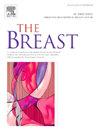在四项前瞻性、多中心、随机ABCSG试验中验证CTS5
IF 7.9
2区 医学
Q1 OBSTETRICS & GYNECOLOGY
引用次数: 0
摘要
5年后临床治疗评分(CTS5)是一种临床病理学工具,旨在评估激素受体阳性(HR+)乳腺癌患者在5年辅助内分泌治疗(ET)后的晚期远处复发(LDR)。虽然作为一种预测算法,但其对ET扩展的预测价值仍然不确定。方法对4项前瞻性随机ABCSG试验(ABCSG-6、-6a、-8和-16)中250例LDR事件的4931例患者进行评分。我们评估了其预测能力、校准准确性和预测价值。采用Cox回归模型分析LDR时间。结果在我们的队列中,CTS5无论是作为连续评分还是分类评分都提供了预后信息。在ABCSG-8队列(n = 2054)和联合ABCSG-6+8队列(n = 3308)中,较高的连续评分与LDR风险增加显著相关。分类CTS5显示,高危患者的LDR率明显高于低危或中危患者。无论预测风险如何,该评分都略微高估了LDR风险。虽然在相对量表上没有发现显著的预测价值,但在CTS5为5的高患者中,当延长ET治疗时间超过2年时,绝对LDR风险降低23.4%。在CTS5为2的患者中,当ET延长至10年而不是7年时,没有发现任何益处。结论CTS5是HR +乳腺癌LDR风险分层的有效工具,但在确定ET延长的获益时应谨慎使用,因为没有发现显著的预测价值。本文章由计算机程序翻译,如有差异,请以英文原文为准。
Validation of the CTS5 in four prospective, multicenter, randomized ABCSG trials
Background
The Clinical Treatment Score post-5 years (CTS5) is a clinicopathological tool designed to estimate late distant recurrence (LDR) in hormone receptor-positive (HR+) breast cancer patients after 5 years of adjuvant endocrine therapy (ET). While intended as a prognostic algorithm, its predictive value for ET extension remains uncertain.
Methods
The score was calculated in 4931 patients from four prospective randomized ABCSG trials (ABCSG-6, -6a, -8, and -16) with 250 LDR events. We assessed its prognostic power, calibration accuracy, and predictive value. Time to LDR was analyzed using Cox regression models.
Results
In our cohorts, the CTS5 provided prognostic information whether used as a continuous or categorical score. In the ABCSG-8 cohort (n = 2054) and the combined ABCSG-6+8 cohort (n = 3308), a higher continuous score was significantly associated with increased LDR risk. The categorical CTS5 showed that high-risk patients had significantly higher LDR rates compared to low- or intermediate-risk patients. The score slightly overestimated LDR risk, regardless of predicted risk. Although no significant predictive value was found on the relative scale, an absolute LDR risk reduction of 23.4 % was found in patients with a high CTS5 of 5 when extended ET was administered additional five than two years. In patients with a CTS5 of 2, no benefit was found when ET was extended to 10 instead of 7 years.
Conclusion
The CTS5 is a valid tool for LDR risk stratification in HR + breast cancer, but should be used cautiously for determining benefits from ET extension, as no significant predictive value was found.
求助全文
通过发布文献求助,成功后即可免费获取论文全文。
去求助
来源期刊

Breast
医学-妇产科学
CiteScore
8.70
自引率
2.60%
发文量
165
审稿时长
59 days
期刊介绍:
The Breast is an international, multidisciplinary journal for researchers and clinicians, which focuses on translational and clinical research for the advancement of breast cancer prevention, diagnosis and treatment of all stages.
 求助内容:
求助内容: 应助结果提醒方式:
应助结果提醒方式:


